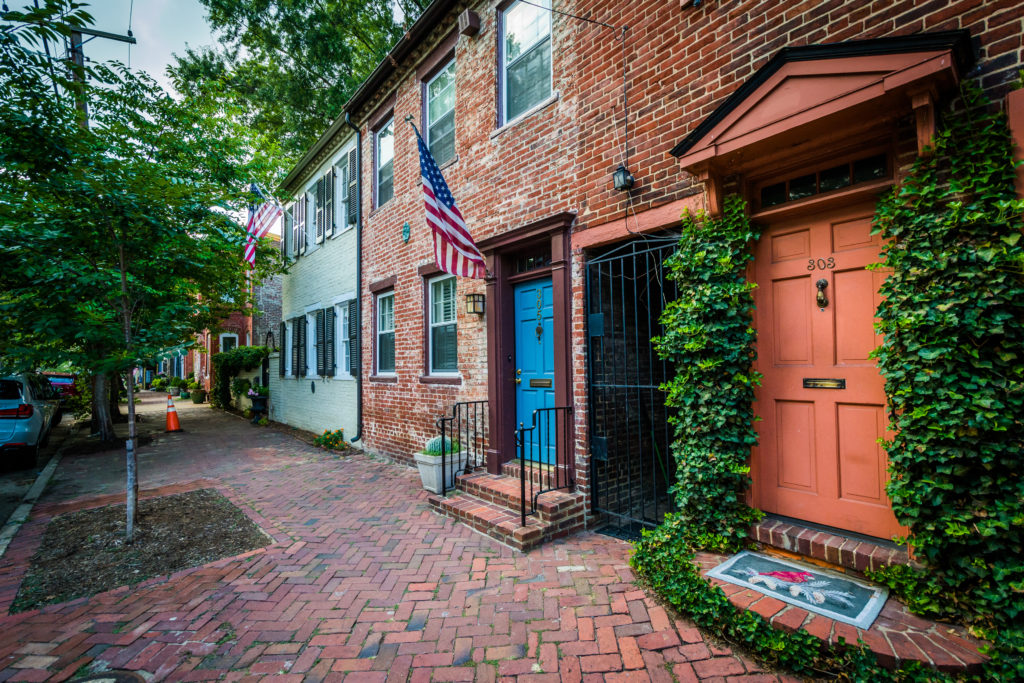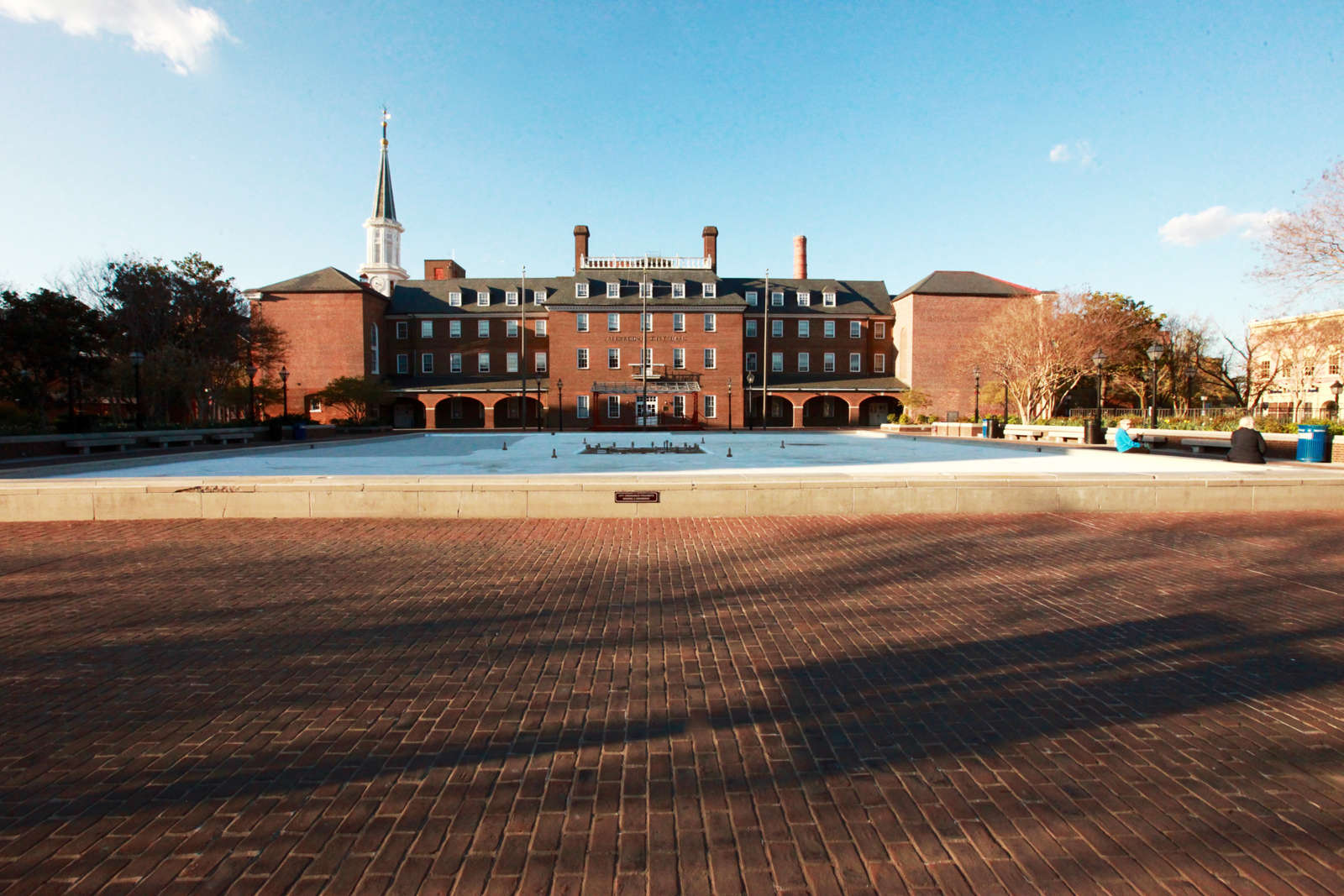(Updated 9/19) The next public discussion for Alexandria’s Zoning for Housing/Housing for All is coming next week.
The second of three fall community meetings is scheduled for Thursday, Sept. 28, from 6-8 p.m.
The proposal debuted at a joint City Council-Planning Commission meeting earlier this month. While the plan includes some significant changes, like the removal of single-family-only zoning, there were widespread concerns on the governing bodies that the practical impacts of these changes would be negligible without other significant alterations to zoning requirements like setbacks or density.
“Staff will summarize draft recommendations presented during the September 5 joint City Council-Planning Commission work session, review the schedule of additional engagement opportunities, and answer questions from the community,” the release from the City of Alexandria said.
The last meeting was on Thursday, Sept. 14, and was fairly uneventful. As with the upcoming meeting, there was no real public comment section, with a few public comments read aloud off note cards by city staff.
The meeting will be held in-person at the William Ramsay Recreation Center (5650 Sanger Avenue) or can be viewed online. In-person and virtual interpretation services will be provided in Amharic, Arabic and Spanish.
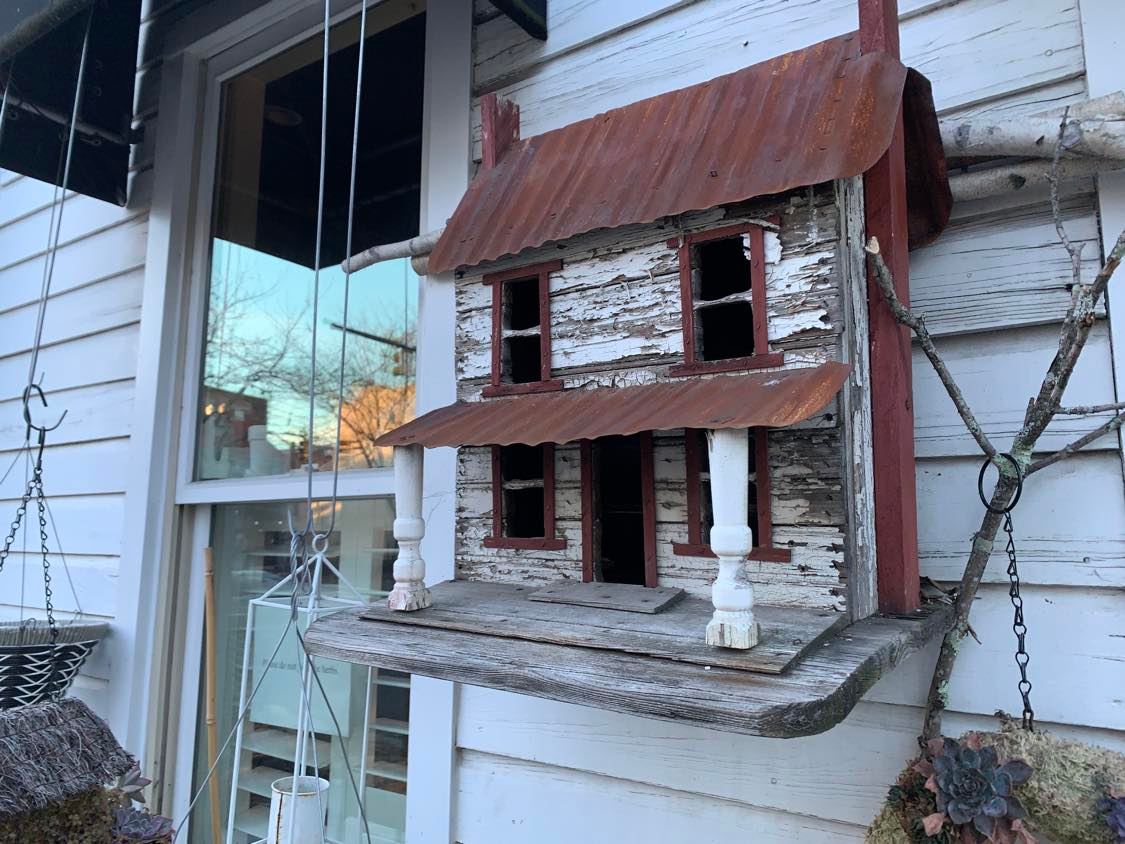
A little over a week after the City of Alexandria debuted its new Zoning for Housing/Housing for All plans, the city is inviting the public to the first community feedback session.
City staff presented the draft recommendations earlier this week at a City Council-Planning Commission work session. The big headline recommendation was ending single-family-only zoning, though beyond that city leaders were skeptical about the plan’s ability to make a substantial impact on affordable housing supply.
The meeting next Thursday is the first in a series of community meetings. The City is embarking on a whirlwind tour this fall of public meetings and town halls regarding the plan before a final vote on Nov. 28.
“On Thursday, September 14, from 6-8 p.m., the City will hold the first of three fall community meetings on the Zoning for Housing/Housing for All initiative,” the event listing said. “Staff will summarize draft recommendations presented during the September 5 joint City Council-Planning Commission work session, review the schedule of additional engagement opportunities, and answer questions from the community.”
In a poll earlier this week, roughly 53% of respondents said they thought the zoning changes go too far, while 32% said didn’t think the changes went far enough. Only 14% said they thought the city struck the right balance.
The meeting can be attended in person at the Charles Beatley Central Library (5005 Duke Street) or online.

The Zoning for Housing/Housing for All proposals were finally unveiled last night and opinions have been decidedly mixed.
The plan focuses on incremental changes in zoning policy that weren’t quite as ambitious as some hoped and others feared.
The zoning changes could create more housing in industrial zones, reduce parking requirements for housing, and allow multiple residences to be built in single-family zoning.
While a similar change sparked widespread community discussion in Arlington, in Alexandria, city staff noted that the plan does not include recommendations to change lot frontage, square footage, or other restrictions to construction — making the change likely to have a less dramatic impact than might initially be supposed.
City leaders offered tepid support for the proposals and praise for the effort that went into the project. At the same time, Planning Commission Vice Chair Melissa McMahon and others expressed concern that the changes didn’t go far enough.
“I’m a tiny bit underwhelmed,” said McMahon. “That’s not a criticism, it’s more a sense of existential disappointment that the challenges we face are so large… we’re still barely moving the needle. I want to put that on the table because that’s my heartfelt reaction.”
McMahon wasn’t alone. Advocacy group YIMBYs of Northern Virginia released a statement sharing concerns that the incremental changes would be insufficient to address the city’s housing shortage.
“While our grassroots organization’s members welcome the recommendations discussed tonight, they also share the concern expressed by multiple City Council members and Planning Commissioners that these incremental proposed changes would be insufficient to address the scale of our city’s housing shortage and affordability crisis,” the organization said in a release. “We look forward to advocating for their expansion.”
At the same time, the group said they supported the reforms as a critical first step.
“Alexandria is a wonderful city, but it has become prohibitively expensive as demand for living here outpaces the supply of homes available,” said Peter Sutherland, an Alexandria Lead for
YIMBYs of Northern Virginia. “These reforms are a critical first step toward ensuring Alexandria’s future as an affordable, sustainable, and welcoming community.”
But while some advocated for the city to go further, others had previously shared concerns that the planned zoning changes could go too far. Last Tuesday, a rally led by a group called The Coalition for a Livable Alexandria gathered a crowd of supporters outside City Hall to argue against potential increases in density.
“Residents who have a different viewpoint, residents who have concerns, residents who ask tough questions are not the enemy,” said Coalition Chair Roy Byrd at the rally. “We just want to make sure we do it in the best way possible and that we work together.”
The Coalition for a Livable Alexandria could not be reached for comment.
Some at the meeting last night said the proposals struck the right balance between the status quo for zoning and significant changes.
“I have a naturally conservative attitude to fixing what isn’t broken,” said Planning Commissioner David Brown said. “This is not a radical proposal, and they would tell you maybe it’s not radical enough. My sense is this is an incremental proposal… The work is not done. There’s going to be more to do. Your approach here has been oriented toward the nuts and bolts and I think it will be fairly easy to put together the statutory language to implement this.”
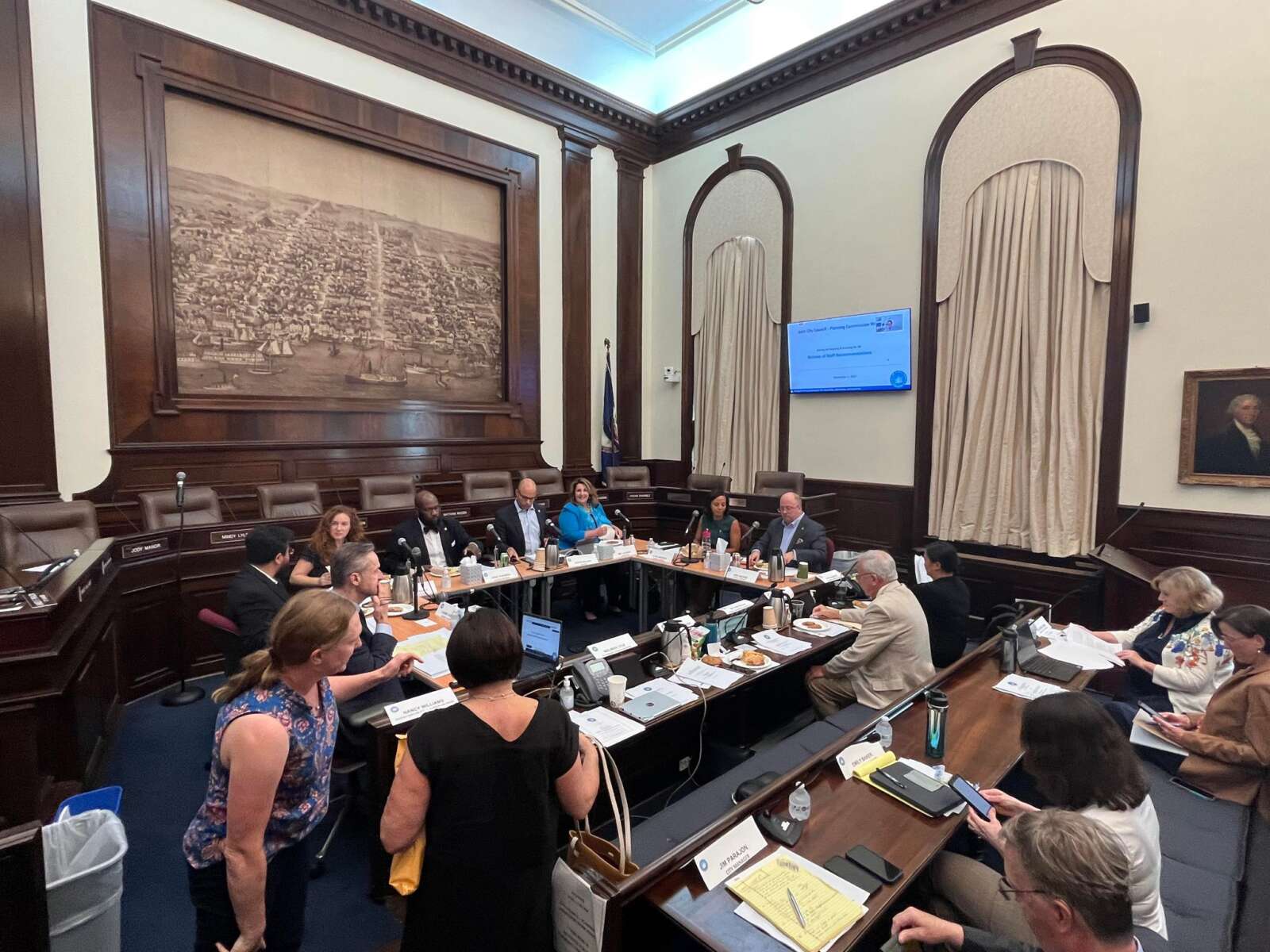
The Zoning for Housing/Housing for All project turned out to be less of a revolution in Alexandria’s zoning and — for better or worse — more of a gradual evolution.
After extensive build-up and public discussion, Director of Planning Karl Moritz debuted zoning changes to a mixed response from city leaders.
The core gist of Zoning for Housing/Housing for All is a ground-up effort to rework city zoning to be more affordable, accessible and available. While there was praise around the work that went into the project, several city leaders said they were underwhelmed by the project’s scope.
Zoning for Housing/Housing for All touches on some of the same topics as neighboring Arlington’s similar Missing Middle zoning changes, including expanding housing options in single-family zones, but it became clear during the City Council and Planning Commission discussion that existing zoning limitations might blunt the impact of that change.
The staff recommendation is to add the opportunity to construct two to four-unit dwellings in single-family residential zones. The estimated result would be 66 new residential buildings developed over 10 years and 178 total new units.
An optional alternative is a more conservative two-unit dwelling in some zones and three or four multi-unit dwellings in others.
However, what seems like a significant change is watered down by the fact that the additional units would need to exist within the current limits for lot coverage and height as current single-family dwelling units.
According to the presentation:
To preserve neighborhood compatibility, the proposed new residential dwelling types would have to follow the same limitations for lot coverage and height as any new single family dwelling would. Setbacks, lot frontage, floor area ratio and height requirements would be equally applied to any new residential dwellings constructed in a zone.
City staff also recommended moving to no minimum parking requirements for dwellings with up to four units in the enhanced transit areas along Duke Street, Old Town/Del Ray and the West End.
Housing outside of those areas would have a minimum 0.5 parking spaces per unit for dwellings — with a note from Moritz later that the city rounds those half-space requirements up if there’s an odd number of units proposed.
Other changes included replacing the “family” requirement in zoning ordinance with a simple occupancy limit.
Moritz said changes to lot coverage requirements could be addressed later, but that city staff didn’t want to change too many elements of zoning at once.
“We thought it was important to hang on to the overall amount of building that is permitted when taking this particular step,” Moritz said. “In terms of single-family zoning… the size of the container limits what you can have there.”
Moritz said not touching things like setback requirements was a conscious decision by staff.
“There’s no way to fit more units in there in a way we thought the market would adopt,” Moritz said. “We have chosen to limit ourselves to the development envelope that currently exists.”
Multiple City Council and Planning Commission members said that caution was disappointing.
“I’m a tiny bit underwhelmed,” said Planning Commission Vice Chair Melissa McMahon. “That’s not a criticism, it’s more a sense of existential disappointment that the challenges we face are so large… we’re still barely moving the needle. I want to put that on the table because that’s my heartfelt reaction.”
Elsewhere, the report also put a nail in the coffin of plans to add more density and height to more areas of the city. One of the city’s main tools for getting affordable housing units from developers is trading those units for additional height and density allowances.
The city had considered expanding that trade to areas with lower height limits — between 45-50 feet — but ultimately found that other limits like square footage and setback requirements would likely keep that from being utilized.
Unexpectedly, some of the most substantial changes were proposed for Alexandria’s fairly limited number of industrial zones. Moritz pointed to Eisenhower West as an example of an area of industrially zoned buildings with retail, exercise, performance spaces and church uses compatible with housing.
Zoning for Housing/Housing for All aims to turn these industrial zones into areas with better housing and transit options.
“Most of these industrial buildings are built in an anti-urban way,” Moritz explained. “Our proposal is to regulate new industrial buildings in our industrial zones with some urban design criteria.”
Mayor Justin Wilson said the earlier chicken kerfuffle revealed to many on City Council that industrial zoning was fairly laissez-faire about nearly everything except having residential units.
“You can do literally almost anything in industrial zones except sleep there,” Wilson said. “While single-family zoning gets all the attention in this discussion, I imagine other parts of the proposal will be far more productive.”
But these changes for industrial areas only seemed to rub salt in the wound for those disappointed with the conservative changes to single-family zoning.
“By the time we get to single-family zoning, staff are saying the only thing we’re changing are the number of units; we’re not changing any of the things that create those constraints,” McMahon said. “That didn’t resonate very well for me; that in one part of town, we’re talking about freeing up things, making buildings more dense, in another part of town, we’re retaining it all except for the number of units.”
Commissioner David Brown said he understood McMahon’s concerns but said he appreciated the proposal as an incremental change.
“I have a naturally conservative attitude to fixing what isn’t broken,” Brown said. “This is not a radical proposal, and they would tell you maybe it’s not radical enough. My sense is this is an incremental proposal… The work is not done. There’s going to be more to do. Your approach here has been oriented toward the nuts and bolts and I think it will be fairly easy to put together the statutory language to implement this.”
The proposal will go through an extensive public review process over the next few months before ultimately heading back to the City Council for a vote on Nov. 28.
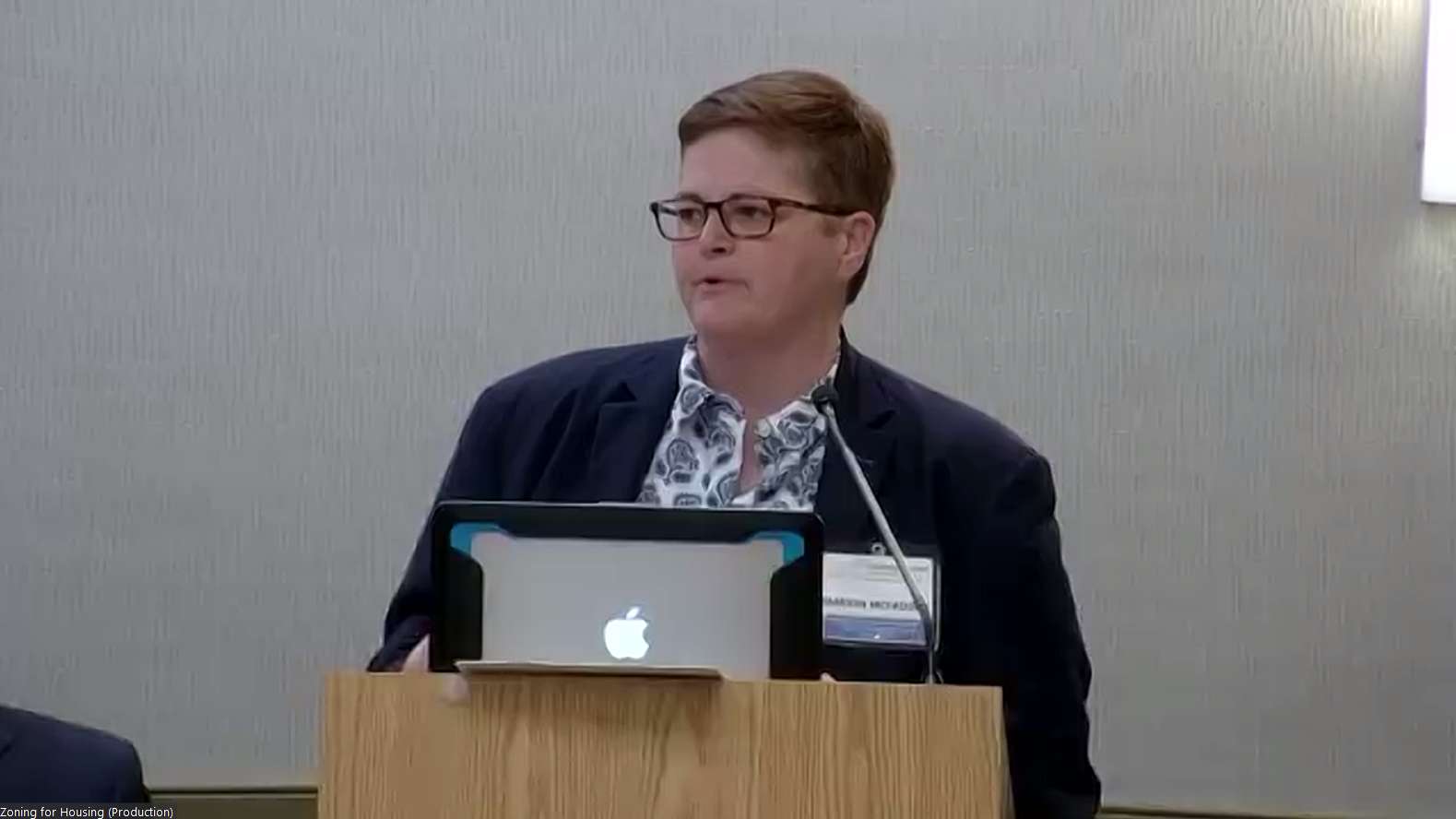
The bottom line at a panel on housing last night: housing is unaffordable in Alexandria and likely won’t get cheaper without more construction.
Last night, the City of Alexandria hosted a panel of experts to discuss the state of housing in the city — from a look back at the evolution of the city’s zoning code to projections and trends in the housing market. The panel is part of the city’s ongoing Zoning for Housing/Housing for All project, which aims to reshape zoning in the city to be more accessible, affordable and available.
Even before the release of official recommendations about the Zoning for Housing/Housing for All plan, it’s already drawn some backlash from local residents. At a rally on Monday night outside of City Hall, residents expressed support for goals of adding more affordable housing, but shared concerns about how density could impact the city’s neighborhoods.
While the plan’s recommendations aren’t public yet, it comes in the wake of the “Missing Middle” zoning changes that stirred up similar contention in Arlington.
The panel on Tuesday night notably didn’t include specifics about the recommendations — that’s scheduled for a work session on Tuesday, Sept. 5 — though some previews of what’s to come did slip in.
Much of the panel focused on examining the present housing market, what role racial discrimination played in the structuring of the city’s neighborhoods, and federal funding opportunities for future housing projects.
Present
Anita Morrison, principal at Partnerships for Economic Solutions, said Alexandria’s housing supply has trended upward.
“In the last five years, the city’s seen 5,898 new units,” Morrison said. “The pipeline includes another 2,000 units under construction and 18,000 in the pipeline, some of which we can expect will not come into fruition.”
Morrison said that project pipeline includes huge redevelopment like that at Landmark Mall and the Potomac GenOn power plant.
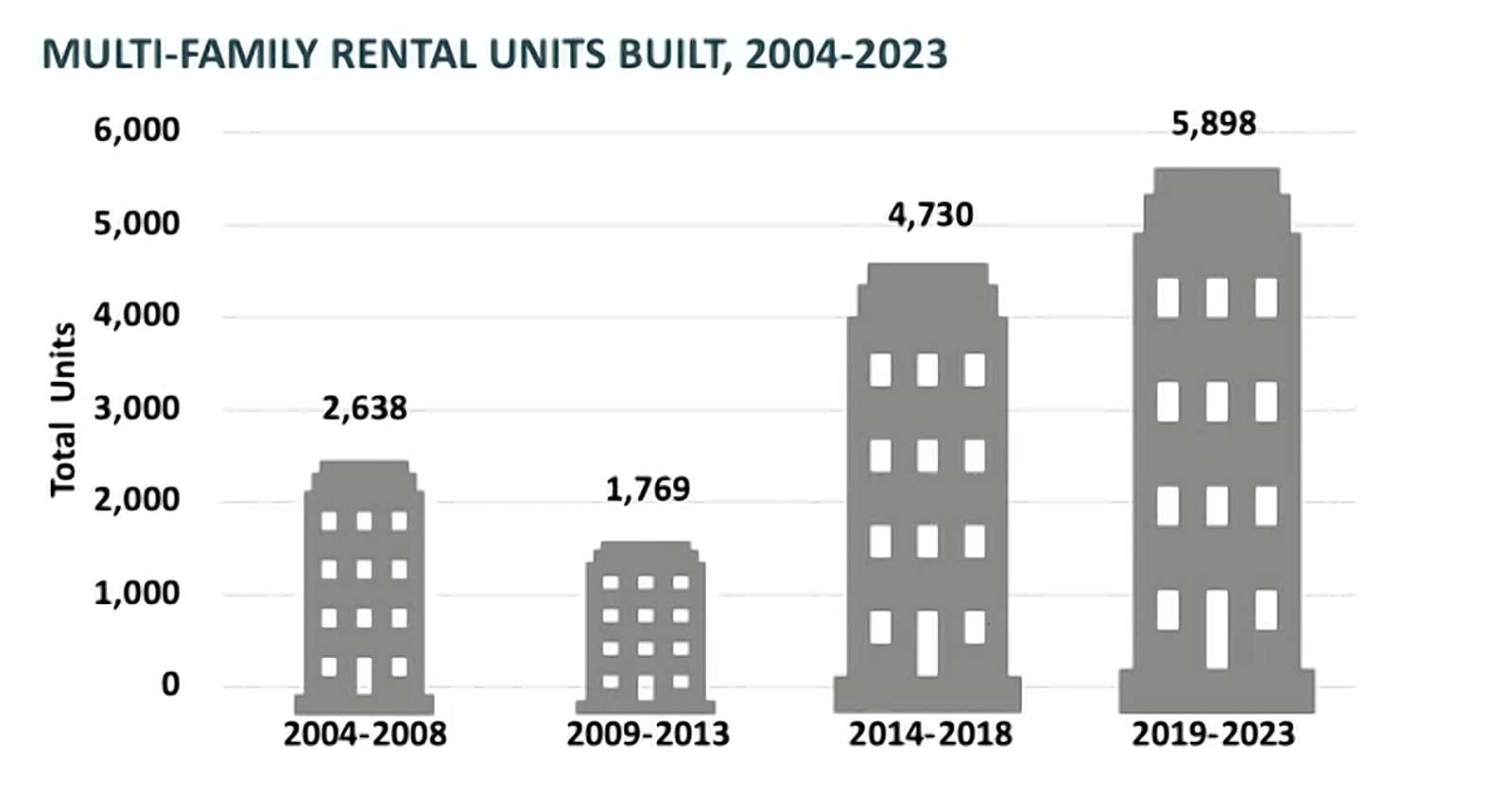
Morrison also credited some of that swelling in local units to office conversions to residential buildings, a market in which Alexandria is leading.
“One of the ways to bring that many units to the market has been a change in the nature of the office market, reducing the demand for office space,” Morrison said. “For some older buildings, this has meant their occupancy fell a lot and created a need to do something different.”
Morrison said 1,700 units have been added to the city through office conversions.
Despite the increase in units, Morrison noted that rents have also continued to trend upward.
“In 2020, average rents declined to 2018 levels,” Morrison said, ” but then rebounded in 2021.”
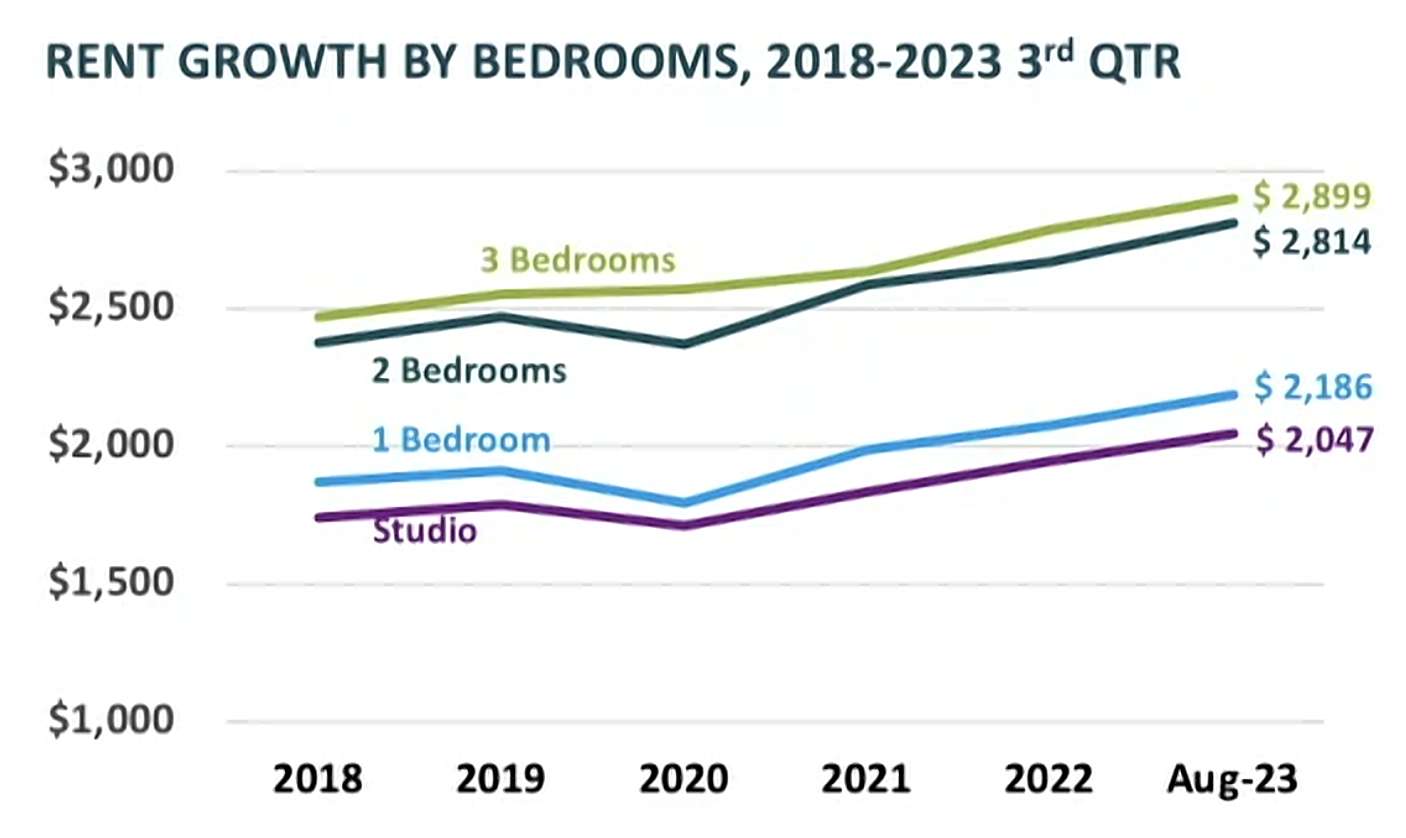
Morrison said the high rents are squeezing out young professionals.
“The fastest growing age category is people ages 65-74 and children under 20, but folks 20-24 dropped in Alexandria and 25-34 did not grow as much as the rest of the market,” Morrison said. “We think that’s a reflection of not being able to buy here.”
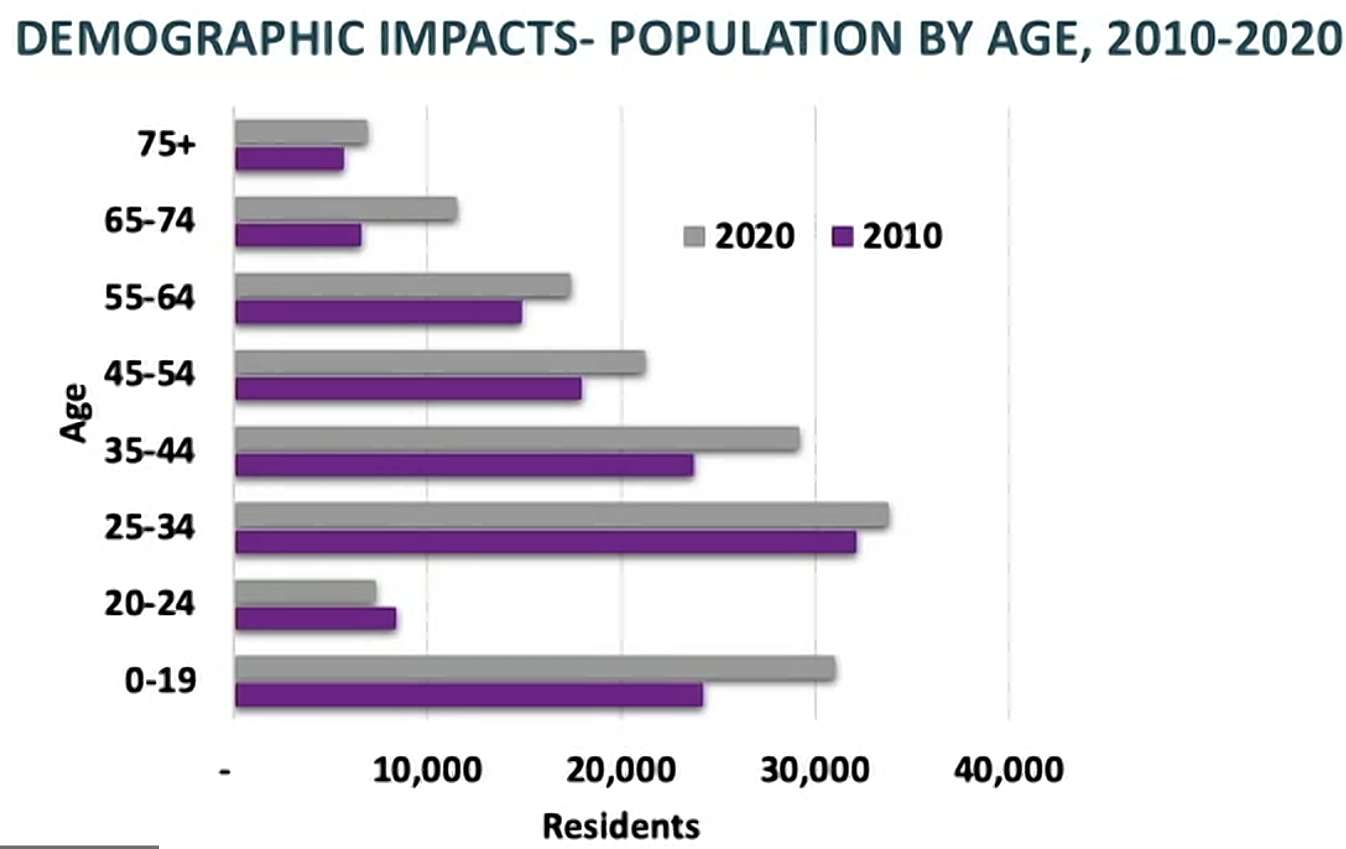
An attendee asked if the increase in units not leading to a lower rents punches a hole in the argument that more supply will drive down rents. Morrison replied that the market is more complicated than that.
“The scale of developments haven’t met the need,” Morrison said. “We’re always running a few steps behind the demand. It’s about getting enough supply to increase vacancy rates and create competition, but we’ve never moved the needle enough with supply to see that happen.” Read More
It wouldn’t be Alexandria without a contentious fight over zoning and density.
As the city begins to roll out plans for zoning reform to create more housing and affordability ahead of City Council review this fall, a new group opposing some of the new proposals is hosting a rally in Market Square (300 King Street) tonight (Monday).
The Coalition for a Livable Alexandria says its rally at 6 p.m. today seeks to “educate Alexandria residents regarding city plans to greatly increase building density through radical changes to the city’s zoning code,” the group said in an event listing.
The group said all sides of the issue are encouraged to attend and discuss the zoning reforms.
The Coalition for a Livable Alexandria’s website criticized the timetable of the project rollout:
The city plans to fast-track its package of sweeping zoning changes starting this fall, leaving limited time or opportunity for public input or action. the city’s proposal amounts to a blank check for developers. While no one disagrees that more affordable housing is needed in Alexandria, the reality is, this proposal will not make a significant difference in the affordable housing supply. instead, the new framework disenfranchises residents, while giving a greenlight to overdevelopment, and gentrification.
The Zoning for Housing project got started in late 2022, with the start of the civic engagement process in March.
The city’s website says the initiative will “propose a zoning framework that adds to the housing supply now provided by Single Family zones,” including reevaluating the current limit of one household per lot and reexamining the city’s definition of family. The site likewise says the initiative will “explore use of bonus height provision in zones with height limits of 45 feet or more.”
In both cases, however, there’s no concrete information yet on the new regulations for single-family zoning or bonus height provisions, saying that both would be further explored as part of the Zoning for Housing/Housing for All project.
A city-led Zoning for Housing/Housing for All panel discussion is scheduled for tomorrow (Tuesday) at 6 p.m. in the Holiday Inn Carlyle (2460 Eisenhower Avenue). The meeting can also be attended via Zoom (login information is on the city website).
The Coalition for Zoning has already gotten some pushback from Alexandria Mayor Justin Wilson, who spent Sunday driving around the city highlighting multi-family housing built around Alexandria, some of which could not be built today under the current zoning regulations.
A new group opposing our “Zoning For Housing” effort suggests that allowing multi-family residences would “fundamentally change the look and character of Alexandria.”
So today Kid2 and I decided to drive around (this doubled as new-driver training). Here’s what we found:
1/10 pic.twitter.com/lsDppE8MpQ
— Justin Wilson (@justindotnet) August 27, 2023

The Alexandria Times reported that DC Poultry Market, the controversial halal meat market at 3225 Colvin Street, was cited with a warning for selling rabbits.
DC Poultry Market’s special use permit was approved back in 2019 in a 5-2 vote, but part of that permit stated that the butchery could only keep live poultry at their facility.
But the butchery’s own Facebook page lists rabbits as one of the offerings at their Alexandria location, with the butchery even specifying to someone asking about rabbits that they will be available.
Videos on YouTube from July show rabbits in a cage at DC Poultry Market.
The Alexandria Times reported that the Department of Planning and Zoning issued a warning to the market on Tuesday after they informed an inspector they were selling rabbits.
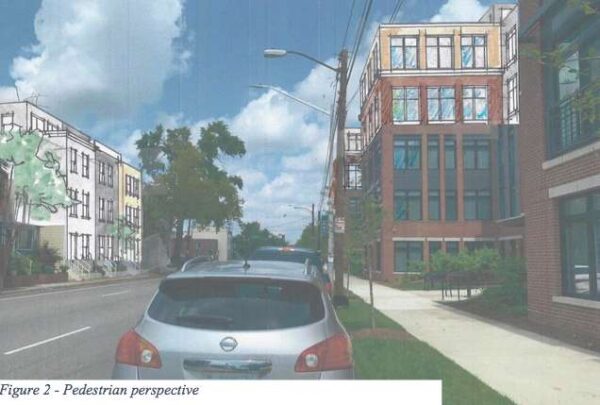
After considerable pushback, the city is rethinking its bonus height provision as a way to build affordable housing in Alexandria.
The city’s controversial zoning for housing plan proposes to upend a number of zoning ordinances. One of them is a bonus height amendment that would incentivize developers to add affordable housing to projects in exchange for two additional stories of construction in areas where height limits are 45 feet or more.
“I would just encourage us that, as we’re thinking about how to prioritize, that we’re not just thinking of it in terms of where can we get the most height or not, but we’re also looking at maybe some of the unintended consequences,” said Council Member Alyia Gaskins in a joint meeting with the Planning Commission on Monday.
On Mount Vernon Avenue in Del Ray, that would mean 70-foot-tall apartment buildings, and residents say the move would ruin the small town feel of the neighborhood. The bonus height provision would also impact properties along Mount Vernon Avenue in Del Ray, as well as in Arlandria, Alexandria West, the Beauregard area, the Landmark area, Eisenhower West, Old Town North and Carlyle.
“What we are finding in our initial analysis is that in most cases, the opportunity for additional height may not be particularly valuable than setting new constraints like setbacks and limit what’s possible on the site much more than height does,” said Nancy Williams, the assistant director of the Department of Planning and Zoning.
The negative effect would be the displacement of more families than are being added back into affordable housing.
“If we do a redevelopment and we’re only getting 30% of that additional height in affordability and the rest of it’s not affordable, that might be totally negated by tearing down a garden style apartment building,” Planning Commission Vice Chair Melissa McMahon said, adding that the policy would generate a bunch of unintended consequences and development won’t work citywide.
The Planning Commission deferred a vote on the bonus height proposal last summer after protests from Del Ray residents.
“Part of the reason we’re here, quite honestly, is because of some of the pushback the Commission offered to the to the bonus height provision and I think it prompted a conversation around how we look at the entirety of this process,” Mayor Justin Wilson said.
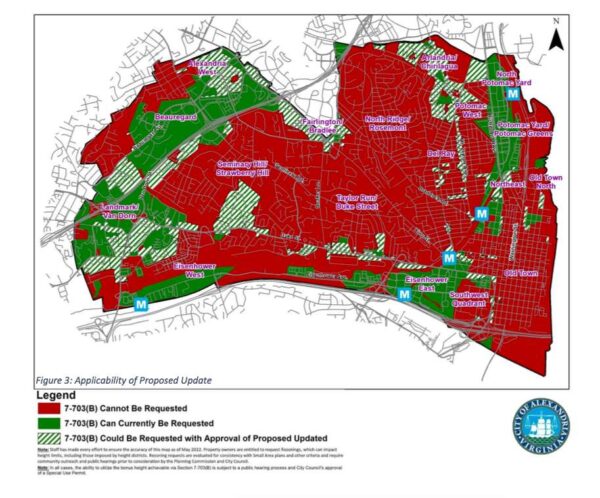
While Del Ray could see negative consequences from adding height in exchange for affordable housing, Williams said there are specific situations where height would be useful and asked whether the bonus height provision should be focused on limited locations.
City Council Member John Taylor Chapman said that the Eisenhower Valley is a prime spot for implementation of the provision.
“I think of places like Eisenhower valley where, whether it’s the eastern part where we started to really grow and frankly message to the community that we don’t mind getting taller there,” Chapman said.
If the proposal is approved as-is, developers would still have to go through an intensive special use permit (SUP) process, which could limit developers wanting to come into Del Ray.
Council Member Kirk McPike said that argument is “not compelling” and that the city shouldn’t inadvertently induce counterproductive redevelopment.
The proposal went through a community engagement phase in the spring, and City staff recommendations will be made in July and August. More community engagement sessions are expected in September and October and then public hearings with the Planning Commission and City Council will be held in November and December.
The proposed zoning for housing initiative is below the jump. Read More

After a request from the Del Ray Citizens Association, Alexandria is leaning toward extending a public comment period by two months after it releases its controversial zoning for housing plan later this year.
The massive plan would upend a number of zoning ordinances. One of them is a bonus height amendment that would incentivize developers to add affordable housing to projects in exchange for two additional stories of construction in areas where height limits are 45 feet or more.
Many Del Ray residents are opposed to 70-foot-tall apartment buildings along Mount Vernon Avenue.
“The Del Ray Citizens Association requests the Planning Commission and City Council provide a 60 day review period between the release of the analysis/findings and the first public hearing to ensure the public has adequate time to review and comment on the Zoning for Housing proposals,” DRCA wrote. “This 60 day period gives the DRCA sufficient time to analyze the proposal and have our membership vote on the initiatives.”
The proposal is in the community engagement phase between now and June. City staff recommendations will be made in July and August, followed by more community engagement sessions in September and October and then public hearings in November and December with the Planning Commission and City Council.
Karl Moritz, the director of planning and zoning, said that the city will work with DRCA to accommodate their request.
“(DRCA) suggested to us that they would find it very helpful if there was at least a 60 day period between the release of staff’s recommendations and the first public hearing,” Moritz said at a public meeting last week. “It’s top of mind, and something that we’re taking a serious look at.”

City leaders, including Mayor Justin Wilson, say that the proposed policies will desegregate Alexandria, which passed a number of zoning ordinances in the 20th century that resulted in dividing the city by race.
“That reality was enforced by a patchwork of ordinances, restrictive covenants, intimidation and lending practices that served to effectively segregate our City for generations,” Wilson wrote in his newsletter last month. “While de jure policies that explicitly enforced segregation were made illegal long ago, the legacy of these policies live on today. In fact, in recent years, Alexandria has grown MORE segregated.”
Nancy Williams, the assistant director of the Department of Planning and Zoning, said that the city is evaluating whether racist zoning ordinances still exist.
“I just want to underscore that what we’re doing here is research,” Williams said. “We did not make a claim that there is racism. We’re trying, with everyone’s support, to generate an understanding of past laws and how they may influence land use patterns… It is worth our while, I think, to take a look to research whether or not any of these barriers still exist, and can prohibit us from moving forward in a way that provides opportunity for everyone.”
According to the city, the initiative includes:
- Bonus height text amendment — This initiative would incentivize more use of Section 7- 703 of the zoning ordinance that allows additional height in new residential projects in exchange for affordable housing. Current law allows the provision to be used in areas with a height limit greater than 50 feet, and the proposal is to allow it to be used in areas with height limits of 45 feet or more. A goal of the initiative is to expand housing choices and dispersion throughout more areas of the City in a manner that is harmonious to the surrounding physical context of the visual depiction of community
- Historic development patterns — The purpose of this initiative is to identify land use patterns, such as the mix of uses and building types found in historic neighborhoods (Del Ray, Rosemont, Old Town, and Parker-Gray) that can no longer be built under existing zoning. Characteristics of historic land use patterns that are desirable would be identified along with recommendations for changes to the Zoning Ordinance to allow these patterns to be considered
- Coordinated Development Districts and affordable housing — CDDs establish the zoning for large tracts of land planned for redevelopment. The purpose of this initiative is to ensure that the creation of affordable housing is supported in each new CDD. The recent CDD for the Potomac River Generating Station site is a model that staff will examine for potential application in future CDDs
- Expanding housing opportunities in single family zones — This initiative will propose a zoning framework to expand housing options in single family zones by enabling new typologies in neighborhoods where they don’t exist now. These options may by their nature be less expensive than the typical new single family home, but this initiative will not be examining the potential for these new units to be “committed affordable” as we have interpreted that without specific tools or public investment to make them so
- Analyses of industrial, townhouse and multi-family zones — These initiatives will seek to create a common set of rules for industrial, townhouse and multi-family development and reduce unnecessary regulatory barriers to construction
- Expansion of transit-oriented development — This initiative will review existing permitted densities within the walksheds of existing and planned Metro stations and bus rapid transit stations. It would further analyze any existing barriers currently in place that limit increased densities around transit stations
- Office-to-residential conversions — This initiative will review Alexandria’s recent experience with office-to-residential conversions, including an evaluation of the impacts of conversions from a variety of perspectives, including housing supply, economic development objectives, and fiscal impact. The project will determine whether the Zoning Ordinance includes impediments to office-to-residential conversions and whether there are areas where we want to encourage or limit conversions
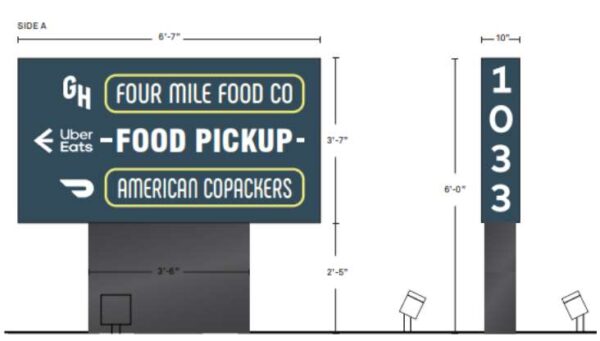
A new zoning request for an Arlandria ghost kitchen provided an update on an approved use that’s been haunting the northern edge of the city since 2021.
Applicant 1033 W Glebe Road ALX is requesting a permit to allow a sign to be built along W Glebe Road that will direct visitors to the kitchen tucked behind the back of a strip mall at 1033 W Glebe Road.
The new 32-square-foot sign is a fairly inoffensive change — unlikely to stir up the kind of controversy nearby music venue The Birchmere went through with its sign change — and staff expressed support in a report on the new sign.
The main item of note in the report is that, while the site has not opened, the plans for the ghost kitchen aren’t dead:
On July 1, 2021, Special Use Permit (SUP) #2021-00049 was approved for an administrative new use to allow the applicant to operate a restaurant, which consists of 24 separate commercial kitchens operated by restaurateurs, who prepare food for carry-out and delivery to individual customers. As of the writing of this report, the space for the applicant is still under construction, and improvement to the driveway and parking lot has not been finalized. When completed, the restaurant and American Co-packers will each occupy approximately half the building.
The building will have a lobby space to accommodate food pick-up for customers, but there will be no indoor dining. The kitchen will operate from 7 a.m. to midnight — and sometimes until 4 a.m. — seven days a week.
“The multiple commercial kitchen concept serves as a restaurant incubator for individual chefs, entering the restaurant market,” the report said.
The permit for the sign is scheduled for review at the Planning Commission meeting on Tuesday, May 2.


